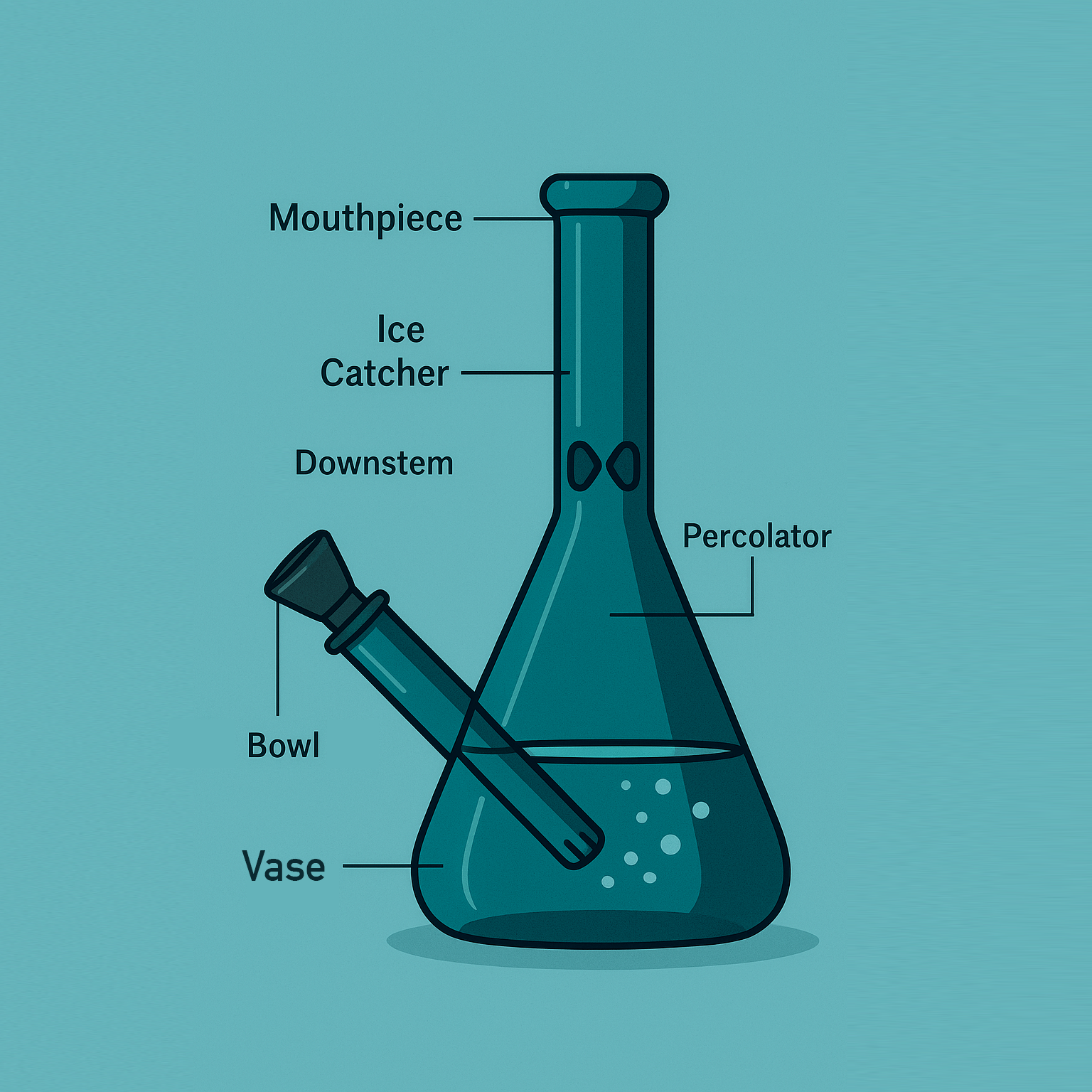Water pipes, also known as bongs, are designed with a few key components that work together to create a smoother experience. While designs vary, most water pipes follow the same basic structure. Here’s a breakdown of the main parts and what each one does:
-
Mouthpiece
The top opening where the user inhales. It’s often shaped for comfort and helps guide airflow from the chamber. -
Neck (or Tube)
This is the main vertical part that leads from the base to the mouthpiece. In tall pieces, it provides extra distance for cooling. -
Chamber (or Base)
The lower part of the pipe that holds water. As smoke or vapor travels through, it passes through this section for filtration. -
Downstem
A narrow tube that connects the bowl to the chamber. It’s what delivers the smoke into the water. Some are removable; others are fixed in place. -
Bowl
This is where material is placed. It’s usually removable and designed to handle heat. Bowls vary in size and can be swapped out. -
Percolator (if included)
A percolator is an internal feature that creates extra bubbles for smoother draws. Not all water pipes have them, but they’re common in advanced models. -
Ice Catcher (optional)
Some pipes have small indents in the neck to hold ice cubes. This cools the smoke further before it reaches the mouthpiece.
These parts work together to improve airflow, comfort, and overall experience. Whether someone uses a simple or advanced water pipe, understanding how it’s built makes maintenance and setup much easier.







Please log in to leave a comment.